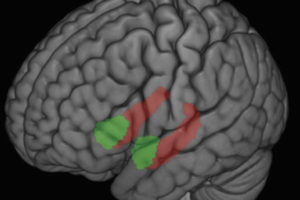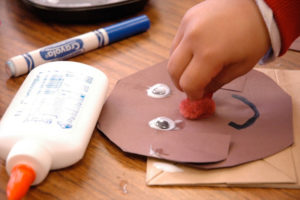What strategies are working when it comes to building emotional well-being in communities? What new insights from research can we learn from?
These questions brought together a group of experts from around the country – including Center founder and director Richard Davidson – who explored the topic at the U.S. National Institutes of Health (NIH).
Here are the key takeaways from the roundtable:
Relationships and Cultural Context are Crucial
Researchers shared two strategies in research that have been successful in improving well-being: strengthening relationships and developing solutions tailored to culture. For example, in one study, researchers and Native American communities worked together to develop “Family Spirit,” a program tailored to Native Americans that sought to improve relationships between young parents and their children. The team noticed that depression, drug use and risky behaviors decreased in the group of adults who participated in the program, while children had fewer social, emotional and behavioral problems.
In another program called Experience Corps, older adults from low income neighborhoods volunteered at elementary schools to help with reading, math and readiness to learn. When scientists scanned adults’ brains afterward, they showed changes in brain regions responsible for storing memories. In addition, participating schools saw a decrease in disciplinary referrals to the office and improved academic achievement.
Supportive Environments Matter
When researchers focus more on improving the environments – the neighborhoods and schools – that support high-risk children instead of focusing on the child alone, kids show better long-term health and behavioral outcomes. The adults in their lives benefit, too, and experience less burnout. In one nation-wide program called “Communities That Care,” researchers and communities joined forces and created programs for kids and their families unique to each community’s needs. Another program trained schools to recognize trauma in pre-K children to buffer teachers from stress but also create a safe, supportive environment for these at-risk children.
Trainings Affect the Brain Differently
In one study, researchers developed a program with three modules to train different aspects of compassion and altruism. The three-month modules focused on presence, emotion and perspective, and affected participants’ emotional and cognitive skills, overall well-being and brains differently. For example, attention improved after attention-focused mindfulness practices but also by loving-kindness meditations. After receiving attention trainings, participants’ brains showed increased gray matter volume in the part of the brain responsible for attention and higher-level awareness. After compassion training, other areas of the brain thickened, including those responsible for empathy and emotions. The findings suggest that various mental training can achieve different outcomes related to well-being.
Going Beyond “Self-Report”
Researchers emphasized the need for better scientific measures of emotional well-being. Currently, measurements are typically “self-report”—meaning participants rate their own feelings and emotions. However, people are not very good at accurately reporting on internal states. In order to more accurately measure well-being, researchers and scientists at the roundtable urged their peers to develop measures for emotional well-being that did not rely on self-report alone.
Mindfulness in Schools Works
Mounting evidence from the Center for Healthy Minds and other organizations suggests that mindfulness in schools benefits both the students and their teachers. MindUp, a mindfulness-based program for pre-K to eighth grade students, teaches children mindfulness skills, such as focusing on one’s breathing and attentive listening. Results suggest that the intervention improved cognition, increased peer acceptance, and reduced aggression between students. In a study focused on teachers, researchers taught mindfulness to teachers to reduce stress and increase emotional well-being. Not only did the intervention positively affect the teachers, it also improved students’ academic achievement.
The Arts Hold Promise
In one study, researchers asked older adults to take acting lessons. Results show that older adults’ episodic recall – the ability to remember personal experiences that happened a specific place and time – improved after the training. Though there is much to learn about why such an intervention improved memory, the project reveals that exploring the arts – from acting to drawing to dance – is yet another potential avenue to well-being.
We're at the Tip of the Iceberg
There is no single way to promote well-being, as many examples and studies have demonstrated. From mindfulness-based interventions to art therapy, there are many ways to examine well-being. As researchers develop interventions, it is equally important to consider the specific needs of each community and collaborate to find and test creative, meaningful solutions. There are certainly avenues to emotional well-being that we haven’t even explored yet, which makes this work both exciting and hopeful.
-Brita Larson






